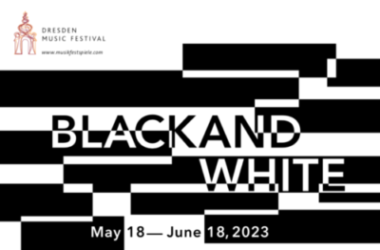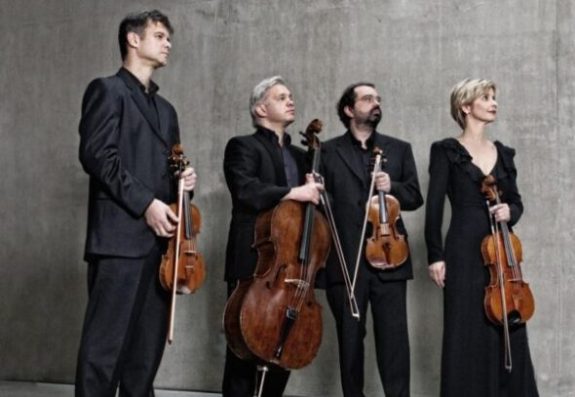
 Germany Dresden Music Festival 2023 [8] – 2.6.2023, Kulturpalast, Dresden: Francesco Piemontesi (piano), Dresdner Philharmonie / Marek Janowski (conductor). (MC)
Germany Dresden Music Festival 2023 [8] – 2.6.2023, Kulturpalast, Dresden: Francesco Piemontesi (piano), Dresdner Philharmonie / Marek Janowski (conductor). (MC)

R. Strauss – Macbeth, symphonic poem, Op.23 (1888); Burleske in D minor for piano and orchestra (1886)
R. Schumann – Symphony No.1 in B flat major, Op.38 Spring (1841)
Artistic director and chief conductor of the Dresdner Philharmonie, Marek Janowski selected this orchestral programme of works by two of Germany’s greatest composers Robert Schumann and Richard Strauss. Schumann and his wife Clara actually lived in Dresden for six years and evidently as much as a third of his works were written whilst living in the city. Strauss too was connected strongly to Dresden, most notably as the city that hosted premieres of nine of his fifteen operas.
The music of Richard Strauss has been a familiar part of my concert attendances. Notably his symphonic poems Also Sprach Zarathustra, Don Juan, Till Eulenspiegel, Ein Heldenleben and Tod und Verklärung are all regular items on concert programmes. Strauss’s 150th anniversary fell in 2014 and generated a substantial number of concerts and I attended three performances of none other than the massive Alpine Symphony and also one of the Symphonia Domestica.
A different kettle of fish is Macbeth and I only recall attending a single performance, and that was back in 2010 by the BBC Philharmonic Orchestra under Gianandrea Noseda at Bridgewater Hall, Manchester. It is certainly one of Strauss’s lesser-known symphonic (or tone) poems and the one he subjected to considerable revision. Inspired by the Shakespeare tragedy Macbeth, it is a work that divides opinions. A common criticism is that Strauss’s music doesn’t adequately correlate to the storyline although attempts have been made to provide programme notes. Polish-born, German conductor, Marek Janowski is no stranger to Strauss’s Macbeth and in 2010 he recorded the work with the Pittsburgh Symphony Orchestra on PentaTone. At the Kulturpalast, Janowski and the Dresdner Philharmonie were very much on the same page with Macbeth, providing an ardent interpretation and having an impressive level of forward momentum in a work that I doubt it plays too often. Certainly, Macbeth is not the most riveting of the composer’s symphonic poems but with a performance as appealing as this I hope that it is not another twelve years before I hear it again.
An even earlier Strauss work from 1886 is Burleske a substantial single-movement concert piece for piano and orchestra where the soloist plays almost continually. Originally titled Scherzo in D minor it was intended for soloist Hans von Bülow, who turned down the score. Strauss didn’t clarify the meaning of the title Burleske that likely alludes to mockery or farce. In a letter to his mother, Strauss described the work as a ‘piano concerto’. It is a work with numerous recordings in the catalogue although I rarely see it programmed.
Curiously Burleske is a work that I have never really warmed to, although Francesco Piemontesi displayed all the formidable virtuosity essential for this dazzling showpiece. Swiss-born Piemontesi played the considerable amount of boisterous writing with genuine conviction. Strauss has also provided several delightful emotional contrasts interpreted by Piemontesi with substantial expertise.
For the principal work of the evening Marek Janowski chose Schumann’s Symphony No.1 (1841) widely known as the Spring. It is the product of a joyous surge of activity from the recently married thirty-year-old composer who was encouraged to write orchestral music by his wife Clara (née Wieck). Initially Schumann allocated poetic titles for each movement The Beginning of Spring, Evening, Merry Playmates and Spring in Full Bloom; all names he later withdrew.
Prior to the interest in period performance practice, romantic works such as Schumann symphonies had developed to be played with large orchestras, sometimes known as big-band forces, that were often twice as large as the orchestral forces that Schumann had available to him. Having heard nothing but period instrument performances of this Schumann symphony over the last few years I was struck by the fullness of the sound that Janowski achieved with the Dresdner Philharmonie using modern instruments. Yes, there was plenty of heft to the sound together with colourful textures. Janowski communicated a cohesive and highly exciting performance that provided ample character. Standing out was the playing of the Spring in Full Bloom finale, marked Allegro animato e grazioso, where Janowski expertly managed the changes of tempi and dynamic, and spirited personality of the movement. At Kulturpalast this felt like the glow of an orchestra happy in its work.
Dresden Music Festival 2023 [9] – 3.6.2023, Palais im Grossen Garten, Dresden: Hagen Quartet (Lukas Hagen, Rainer Schmidt [violins], Veronika Hagen [viola], Clemens Hagen [cello]).
Mozart – String Quartet No.14 in G major, K.387 (1782); String Quartet No.15 in D minor, K.421 (1783)
Shostakovich – String Quartet No.14 in F-sharp major, Op.142 (1972-73)

This Palais im Grossen Garten performance was my first Hagen Quartet chamber recital, and owing to its reputation and listening to many of its recordings my expectations were rightly high.
Founded in Austria in 1981 the Hagen Quartet originally comprised of four siblings. Angelika Hagen left the quartet leaving three siblings, the leader Lukas, violist Veronika and cellist Clemens who now perform with violinist Rainer Schmidt. The Hagen celebrated its fortieth anniversary in 2021. Although not unprecedented for string quartets, the longevity of the Hagen is a remarkable achievement. Many commentators have extolled the playing of the quartet, indeed The Washington Post reviewer in 2017 wrote ‘One of the finest quartets of our time’.
From the outset Mozart has been at the core of the Hagen Quartet’s repertoire. In 2006, the fruits of a thirteen-year project, the Hagen released its set of complete recordings of the Mozart string quartets on Deutsche Grammophon. During its career the Hagen has toured widely with a series of recitals entirely devoted to Mozart Quartets and I notice it has even re-recorded some of the Mozart quartets for Myrios Classics.
Mozart took the lion’s share of this three-work recital from the Hagen with a Mozart string quartet to both open and close the programme. The Mozart quartets selected were No.14 in G major, K.387 known as the Spring and No.15 in D minor, K.421. This pair are from the first of two groups of three that form part of his set of six quartets published as his Op.10 in 1785. This set is known as the ‘Haydn Quartets’ after his friend Josef Haydn the dedicatee who Mozart acknowledged as influencing him in string quartet composition. Today, we recognise the innovative and attractive quality of this set which contrasts to the view of a reporter who in 1787 felt they were ‘too highly seasoned’ for the palate.
One of the first aspects of the performance that I noticed was how quartet leader Lukas Hagen directs the playing with surety of purpose. Steadfast refinement and a profound level of expression summed up the Hagen’s approach to these Mozart scores and its playing was a true delight to experience.
Providing a stark contrast to the Mozart works and written almost two hundred years later, is Shostakovich’s String Quartet No.14 in F-sharp major, Op.142. This late work completed in 1973 was written amid his serious health problems and also a journey to his friend Benjamin Britten at Aldeburgh in England. The Hagen has recorded several Shostakovich string quartets including this F-sharp major score in 1994 on Deutsche Grammophon (reissued on Newton Classics).
Shostakovich’s F-sharp major quartet is a work of puzzling contrasts. It was dedicated to cellist Sergei Shirinsky of the Beethoven String Quartet for which Shostakovich gives the cello prominence. Compared to his other late quartets I don’t find the F-sharp major score quite as austere and forbidding, and overall, it is more accessible, yet peril and lament are never far away. This quartet is a striking example of players and audiences being able to avoid Shostakovich’s public face and delve deep into the private world of a man so conscious of his own mortality.
Entirely compelling are the words I would use to describe the Hagen’s performance of Shostakovich String Quartet No.14. This was strongly committed playing that was detailed and lucid with cellist Clemens Hagen thriving in the conspicuous cello writing. In the score the composer includes what I would describe as a curious raillery, but the Hagen imparted rather more of the unnerving aspects of the writing. Shostakovich made his unsettling quartet a hard work to enjoy, it’s more a case of the Hagen providing a compelling experience.
Demonstrating playing that sets a high watermark, it was a privilege to attend this Palais im Grossen Garten recital by the Hagen Quartet. One of my highlights of the Dresden Festival.
Michael Cookson
